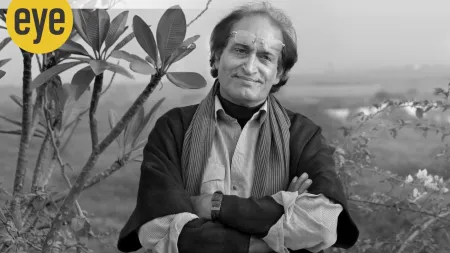- India
- International
1994 Pilibhit Jail case: SP govt withdrew case against staff 9 yrs ago, didn’t inform killed prisoners’ kin
Survivors move HC challenging withdrawal order.
It was in 2007 that a local court in Pilibhit accepted the then UP government’s application for the withdrawal of criminal case against 41 jail officials and staff members who were accused of killing seven Sikh TADA prisoners and injuring 21 others inside Pilibhit district prison in November 1994.
The then Mulayam Singh Yadav government had filed the withdrawal application in February, 2007 and the court had allowed the move next month, following which all the accused were exonerated of all charges.
Nine years later, the family members of the victims and some others who had sustained injuries when the officials had allegedly beaten them inside the jail, claim the Pilibhit court never summoned them to present their side of the case. They also claim that they were never told that the case against the jail officials has been withdrawn. They have now moved Allahabad High court challenging the state government’s move and also seeking direction to quash the withdrawal order. The petition was filed last week.
“For last several years, we kept waiting for court summons to record our statement in the case. When no summons came, we approached the local court only to know that the state government had moved withdrawal application, which had been allowed,” said Sukhbeer Singh, who was in prison and had allegedly sustained injuries when the inmates were rounded up and beaten in the intervening night of November 8 and 9 in 1994.
UP Crime Branch-CID, which investigated the case, had filed a chargesheet against 41 jail officials, including then Pilibhit district jail superintendent V S Yadav in 1995. The jail officials had moved Allahabad High Court and obtained a stay on court proceeding.

In February 2007, then prosecuting officer of the Crime Branch-CID filed an application in the court of Chief Judicial Magistrate (CJM), Pilibhit, seeking direction to withdraw the case. The next month, the court allowed the application. “Now, after coming to know that case has been withdrawn, we have moved the High Court seeking direction to quash then CJM’s order and issue direction to the trial court to proceed with the trial in the case,” said another petitioner Pragat Singh, who too had sustained injuries.
Watch Video: What’s making news
Other petitioners include four family members of the deceased, four others who were injured in the incident and two local residents of Pilibhit — Human Rights Activist and advocate Asad Hayat and police witness in the case, Haroon Ahmed. They all filed the petition on July 14.
Advocate General, UP, Vijay Bahadur Singh said, “The court has observed that state government may file the objection about the maintainability of the petition.”
Pilibhit-based social activist Harjendar Singh Kahllon, too, had moved the High Court with a similar prayer and the court had taken up the matter last month.
According to another petitioner, Harbhajan Singh, the case dates back to intervening night of November 8 and 9, 1994, when the jail staff forcibly dragged him and 27 others out of the Barrack No 7, where they were lodged, and took them to Barrack No 4. There the jail staff gagged them and started beating them with sticks. When some inmates tried to run away, the jail staff tied their legs, he alleged.
He further alleged that following the assault, six prisoners died at the spot while 22 others got seriously injured. One of the injured prisoners succumbed to injuries in the hospital.
“We still feel the pain of the severe beating,” said Pragat Singh.
Two FIRs were then filed over deaths of the prisoners and both the cases were transferred to Crime Branch-CID for investigation.
The first FIR was filed by then Pilibhit district jail superintendent V S Yadav in which he alleged that inmates had attempted to escape by breaking the barrack walls. Jail officials used force following which a clash took place, which resulted in the deaths and injury to inmates.
He had claimed that some jail staff too were injured.
The CB-CID had filed the closure report in the FIR lodged by Yadav stating that allegations were found to be true but all the accused had died.
The second FIR in the same incident was filed by local resident Gyani Trilochan Singh (now dead) against Yadav and 40 other jail staff.
CB-CID investigated the case and filed a chargesheet against 41 jail officials in 1995 after securing prosecution sanction against the accused. Contradicting its own findings in the closure report in the first case, the investigating officer stated that the prisoners were taken out of their barracks and beaten up in which seven died and others got injured.
Contacted, Yadav, who is now posted as senior superintendent at Prisons Headquarters in Lucknow, claimed that the inmates had attempted to escape after breaking iron rods of the barrack. A clash took place in which jail staff also got injured. “After chargesheet was filed, we had moved the High Court and obtained stay on the proceedings,” he said.
On February 2, 2007, the prosecuting officer of CB-CID moved an application in the court of the CJM requesting to withdraw the case.
The application stated that the inmates had cut iron rods of the barrack in an attempt to escape. When they failed to escape, they instigated other prisoners and clashed with the jail staff. Twelve jail employees got injured in the clash. It further stated had the jail superintendent (Yadav) not applied stern action, serious situation could have arisen. The application further stated that jail staff followed para-840 of the Jail Manual and used necessary force, which was made permissible under the said provision.
Later, on March 30, 2007, then CJM allowed the application moved by the prosecuting officer.
May 05: Latest News
- 01
- 02
- 03
- 04
- 05





































